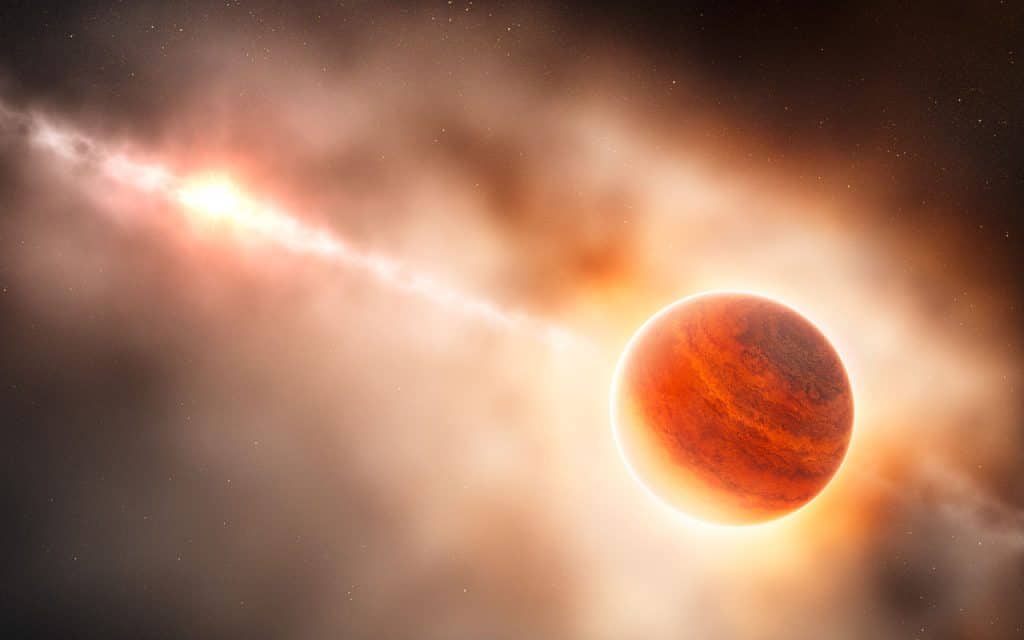Young ‘Hot Jupiter’ helps astronomers solve planet formation question
June 16, 2022 - Reading time: 3 minutes

Observing distant planets helps astronomers understand a thing or two about planet formation but it doesn’t help answer the countless questions that still remain unanswered.
Among them is the ever puzzling question of how ‘hot Jupiters’ like the ones recently discovered are formed so close to their host star.
To answer this question, astronomers will be required to study a ‘hot Jupiter’ that is still forming and when you take the vast Universe into the equation, it is like finding a needle in the haystack. However, a team of researchers struck gold when they found a young ‘hot Jupiter’ orbiting in the immediate vicinity of a star that is barely two million years old—the stellar equivalent of a week-old infant. The planet of this type in its early years is the first ever evidence that will help astronomers understand how planetary systems form and evolve.
The planet was discovered while a team of astronomers was monitoring a star barely two million years old called V830 Tau, located in the Taurus stellar nursery some 430 light years away. Over 45 days of observation led astronomers to ascertain that there is a ‘hot Jupiter’-like planet that is orbiting the star at a distance only one twentieth of that between the Earth and the Sun. The discovery shows for the first time that hot Jupiters can appear at a very early stage in the formation of planetary systems, and therefore have a major impact on their architecture.
Vicinity to Host Star is Surprising
One of the reasons why astronomers have been both puzzled and amazed by the presence of ‘hot Jupiters’ so close to their host star is that normally in Solar Systems rocky planets are found close to the star while gaseous giants like Jupiter and Saturn are found much further away. Recent discoveries of gaseous giants very close to the host star do not sit in line with what astronomers have believed so far about structure of solar systems.
Theoretically, astronomers believed that gaseous giants form quite far away from their host star and over a period of them through various external influences, they move closer to the star. Detecting planets in orbit around very young stars proves to be a significant observational challenge, since such stars are monsters in comparison with our own Sun. This is because their intense magnetic activity interferes with the light emitted by the star to a far greater extent than a potential giant planet, even in a close orbit.
The findings are published in journal Nature.

DW Staff
David Lintott is the Editor-in-Chief, leading our team of talented freelance journalists. He specializes in covering culture, sport, and society. Originally from the decaying seaside town of Eastbourne, he attributes his insightful world-weariness to his roots in this unique setting.




